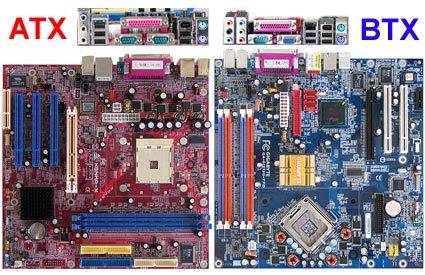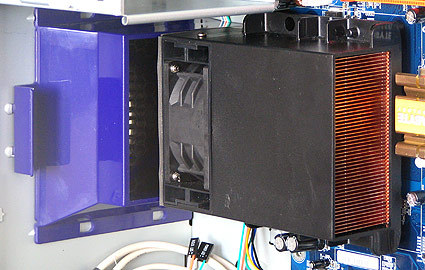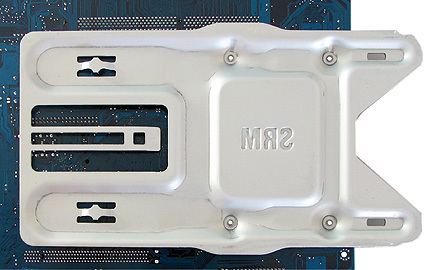Either Way ATX or BTX Cases
Background: What Distinguishes BTX From The ATX Form Factor?
The acronym BTX stands for Balanced Technology Extended, and includes various important enhancements to cases and hardware components among its specifications. The primary drivers behind the development of BTX include more efficient PC cooling (or better cooling performance, if you like) but also quietest possible operation.
BTX divides a PC case into zones, inside each of which only specific components may be situated. This helps ensure that the CPU socket always appears in the same zone, for example. Though ATX leaves lots of room for vendors to express their individuality, BTX requires those who adhere to this specification to follow zoning rules explicitly.
Visually, the biggest change that BTX entails involves a shuffling of motherboard components that's a mirror image of typical ATX arrangements. Expansion slots and the I/O panel change places. Among other things, this has the intentional effect of putting PCI Express graphics cards in the path of the CPU fan's air stream.
Differences between ATX and BTX
The biggest design change for BTX is its attention to air intake, airflow and exhaust inside the case. Using a 120 mm fan and a so-called airflow channel (sometimes called a wind tunnel), this design seeks to suck in fresh air from the front of the PC case, and pump it through a thermal module out the back, routing air across the CPU and its cooler.
A wind tunnel handles air intake for the thermal module.
The low-profile version of the Coolermaster thermal module.
Get Tom's Hardware's best news and in-depth reviews, straight to your inbox.
The SRM helps position and anchor the thermal module.
Simply put, a thermal module is nothing more than a CPU fan, which takes on new dimensions and responsibilities. Installing this fan requires an SRM (Support and Retention Module), which is screwed in underneath the motherboard. The SRM thus also provides additional support and stability for the motherboard inside the case as well.
Other new features in BTX include making PCI Express (x16) the standard graphics slot (BTX does away with the AGP slot), and mandatory inclusion of a four-pin 12V supplementary power connector for the CPU to stabilize voltage delivery. To match the many forms of classical ATX formats, smaller BTX variants such as MicroBTX and PicoBTX are also under development. The last of these formats will be most commonly found in mini-PCs or barebones computers.
Current page: Background: What Distinguishes BTX From The ATX Form Factor?
Prev Page Technical Specifications Next Page Yeong-Yang YY-4301: BTX-only PC Case-
use this link if need be ;Reply
http://www.thermaltake.com/product/Chassis/fulltower/armor/va8000bws.asp
what i would like to know is if this case – Armor VA8000BWS , INCLUDING the BTX Upgrade Kit ,
if i can use the upgrade btx kit and use a nvidia nForce 790i SLI mainboard in this case ... or do i have to buy a btx mainboard?




